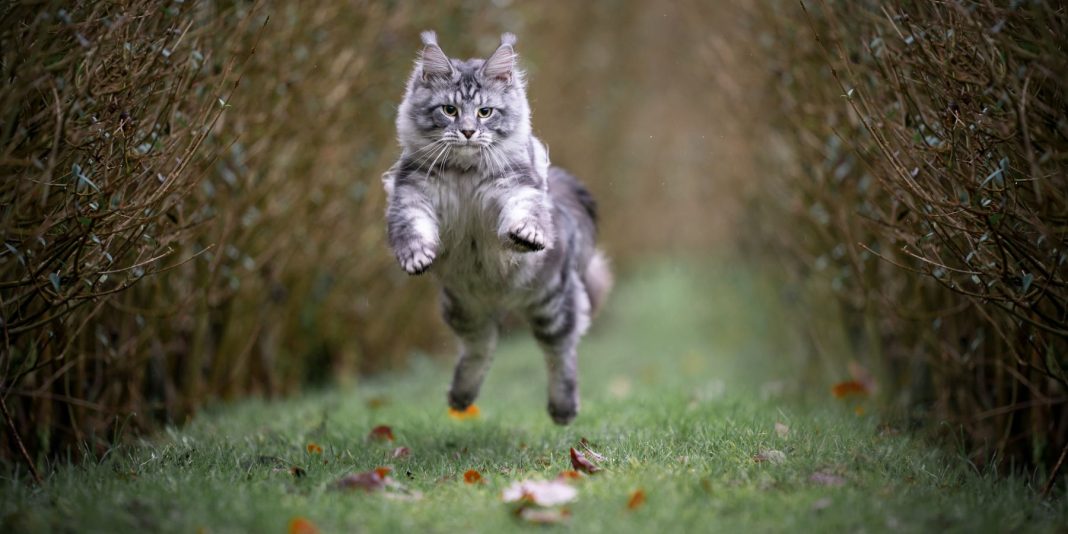As a devoted cat owner, I’ve faced the challenge of teaching my furry friend not to jump on certain surfaces. It’s a common issue many pet owners encounter, and I want to share my experiences and tips to help you guide your cat.
This step-by-step guide will walk you through how to train your cat, and yes, a cat harness plays a surprisingly helpful role in this process.
Step 1: Understanding Why Cats Jump
First, it’s important to understand why cats jump. Cats are natural explorers and love to climb to high places. They do this for fun, to get a better view, or to find a comfortable resting spot. Understanding this behavior is key to addressing it effectively.
Step 2: Provide Alternatives
Your cat jumps because they need to satisfy their climbing and exploring instincts. Provide cat trees, shelves, or window perches where it’s okay for them to climb. This way, they have an acceptable outlet for their behavior.
Step 3: Set Clear Boundaries
Cats learn best through consistent and clear boundaries. Decide which surfaces are off-limits and be consistent in reinforcing these rules. All family members must follow the same guidelines to avoid confusing your cat.
Step 4: Use Positive Reinforcement
When your cat jumps onto an approved area, reward them with treats, affection, or play. Positive reinforcement is more effective than punishment in training cats. It helps them associate good behavior with rewards.
Step 5: Deterrents for Unwanted Jumping
For areas where you don’t want your cat to jump, use safe deterrents. This can be double-sided tape, aluminum foil, or a mild citrus scent. Cats dislike these textures and smell, and this can discourage them from jumping on certain surfaces.
Step 6: Redirect the Behavior
If you catch your cat jumping where they shouldn’t gently redirect them to an appropriate area. You can pick them up and move them, or lure them with a toy or treat. It’s important to do this consistently to reinforce the desired behavior.
Step 7: Training Sessions with a Cat Harness
A cat harness can be a useful tool in training. Put the harness on your cat and attach a leash. When they attempt to jump on an off-limits surface, gently guide them down using the leash. This method provides a physical reminder of the boundaries you’re setting.
Step 8: Be Patient and Consistent
Patience is key in training your cat. It might take several weeks or even months for your cat to fully learn this behavior. Consistency from you and your family will speed up this process.
Step 9: Create a Stimulating Environment
Cats often jump on forbidden surfaces out of boredom. Ensure your cat has enough toys, playtime, and attention. A stimulating environment keeps them occupied and less likely to indulge in unwanted behaviors.
Step 10: Monitor and Adjust Your Strategy
Observe how your cat responds to different training methods and adjust your approach accordingly. Each cat is unique, and what works for one might not work for another.
Step 11: Seek Professional Help if Needed
If you’re struggling to train your cat, consider consulting a professional animal behaviorist. They can provide tailored advice and strategies based on your cat’s specific needs.
Step 12: Celebrate Progress
Celebrate your cat’s progress, no matter how small. Every time they choose an appropriate place to jump or climb, acknowledge it with a treat or affection. These positive moments reinforce good behavior and make training a rewarding experience for both of you.
Step 13: Understand and Respond to Relapses
Sometimes, cats may revert to old behaviors. This is normal. When this happens, gently remind them of the rules and redirect their attention. Stay calm and avoid getting frustrated, as cats can pick up on your emotions.
Step 14: Integrate Training into Daily Life
Make training a part of your daily routine. Use moments throughout the day to reinforce the rules gently and consistently. This integration helps your cat understand that the rules apply all the time, not just during training sessions.
Step 15: Maintain a Safe and Happy Environment
Finally, ensure your home remains a safe and happy environment for your cat. Training should never involve fear or discomfort. Your goal is to guide your cat to understand your household rules while ensuring they feel loved and secure.
Conclusion
Teaching your cat not to jump up on certain surfaces requires patience, understanding, and a bit of creativity. Using methods like positive reinforcement, deterrents, and even a cat harness, can effectively guide your cat’s behavior. Remember, each cat is unique, and what works for one might not work for another, so be prepared to adapt your approach.
Have you tried training your cat not to jump on certain surfaces? What strategies did you find effective? Share your experiences and tips in the comments below. Let’s learn from each other and continue to grow in our journey as responsible and loving pet owners!











